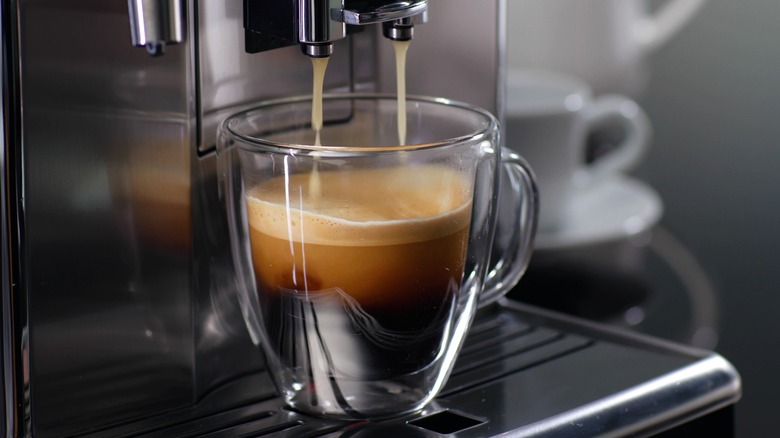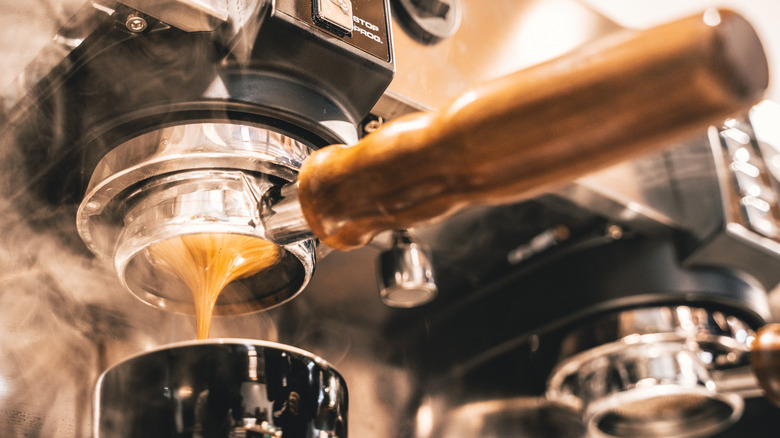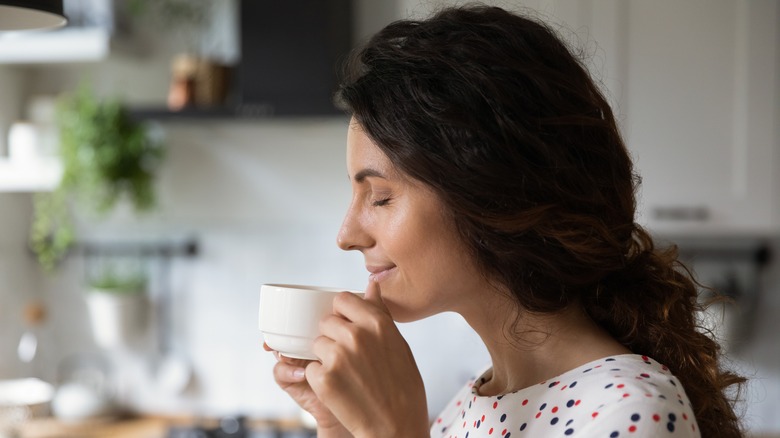Room Temperature Cups Aren't The Best Option For Elevated At-Home Espresso
There's never been an easier time to make a quality cup of espresso at home. Coffee Improved says that you can get a passable at-home espresso machine for about $400 these days. Then, of course, there's the Aeropress pseudo-espresso, and instant machines like Keurig and Nespresso, which are even starting to find a solution to their capsule waste problem.
It takes more than just a fancy machine to make high-quality coffee. There are plenty of other tips and tricks to brew the perfect coffee at home. Everything from grind size, timing, and water-to-coffee ratios can play a role in mastering your preferred brew method. Espresso is no exception to the rule either. There are a few differences between espresso and coffee, but the key difference is the concentrated flavor. Because espresso uses pressure for its extraction method, when made properly, it should draw all of the complex flavors of a tall cup of coffee into a far more concentrated package (via Coffee Affection).
One of the keys to espresso's unique qualities is also thanks to the brewing temperature. Because of this, it's important to maintain that temperature until you're ready to take that first sip.
The role of heat in espresso flavor
Brewing temperature is far more important for coffee than just the wholesome sensation of enjoying a piping hot drink. When it comes to brewing hot coffee, the flavor of the coffee is also greatly affected by the brewing temperature.
BaristaHustle claims that temperature in espresso brewing can make such a big difference that you can brew two almost identical cups, but have different results due to their brewing temperature. This is because different flavor compounds will be extracted from the grounds at different temperatures. So, even if two coffees are extracted exactly the same, certain flavors won't be rendered into the coffee without brewing it at the perfect temperature. For example, using a higher brewing temperature renders more sucrose. This change also tends to increase smoky, or bitter aromas as well.
HomeGrounds states espresso water temperature should be brewed between 195 and 205 degrees Fahrenheit. Whole Latte Love Blog adds that this is because the ideal "in cup" temperature of espresso is about 30 degrees less. The loss of heat throughout this process can be significant, and one of the most unexpected causes is the temperature of the cup the coffee is poured into.
Preheat your mugs for the ideal temperature
It might seem like an extra step, but when brewing espresso at home you should always preheat your mugs. According to Gusta Tory, any coffee that is served in a room temperature cup immediately drops by ten degrees. That means the sacred 160 to 165 degrees Fahrenheit range you're looking for is immediately affected by the temperature of your cup. NewGround adds that the practice of pre-warming the espresso cup is so important that many machines are built with cup warmers on top. Many will also add hot water to the cup, and let it absorb the heat before brewing.
Besides the important brewing qualities mentioned earlier, the drop in temperature will also affect espresso's signature crema. The Kitchn says that a pre-warmed cup will help the crema form better and last longer. Third Wave Coffee Roasters tells us that crema is important for several reasons. First, it shows that you aren't brewing with old coffee beans. A good crema also adds a velvety texture to the drink that carries the flavors along with it. This silky smooth texture also helps the taste to linger longer and provides a satisfying finish.
So, if you're going for cafe-quality coffee at home, and you've invested in a proper espresso machine, make the most of that investment and remember to preheat your mug every time.


